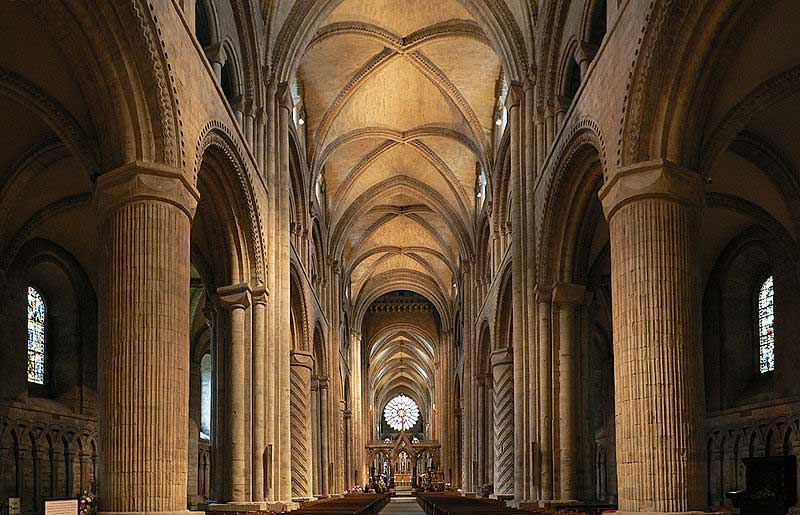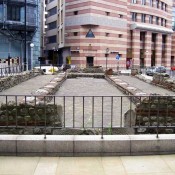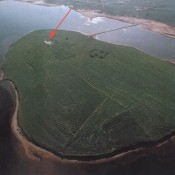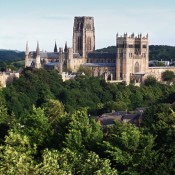Archaeologists working at Durham Cathedral have discovered evidence to suggest that there may once have been a Roman site on the Cathedral peninsula.
A team of six specialists from Archaeological Services Durham University, working with the Cathedral’s Archaeologist Norman Emery, are digging in the former Great Kitchen ahead of work to transform it into a breath-taking exhibition space as part of the Cathedral’s Open Treasure project.
So far, many of the finds have been related to kitchen waste, giving a unique insight into the diet of the monks who lived and worked in the Cathedral. But this week, archaeologists have unearthed samian ware – a type of glossy red pottery from the Roman era, as well as pieces of 13th Century stained glass.
Mr Emery said: “The pottery is very interesting because it makes you wonder if there could have been a Roman site here on the Cathedral peninsula.
“We know there was a site not too far away called Old Durham, on the other side of the river, but several Roman artefacts have been found in this area previously, so combined with these finds, this could suggest that there was a site much closer to home.”
One of the pieces of Roman pottery has been recycled to make a spindle whorl for spinning thread.
These archaeological works at Durham Cathedral are in preparation for the next phase of Open Treasure, which will see a new exhibition route created, taking visitors up to the Monks’ Dormitory, through a new gallery and back down, finishing in the Great Kitchen where the Treasures of St Cuthbert will be on display, before returning to the Cloister via the Covey.
The work also includes building ramps and installing lifts to make sure the new exhibitions have improved access for visitors.
Chris Cotton, Durham Cathedral’s Architect from Purcell, said: “Historic buildings are coming under huge pressure to change and adapt, especially where accessibility is concerned.
“Creating access to the mediaeval Claustral spaces involves meticulous planning and careful work with archaeologists to make sure we are not damaging anything and preserving the Cathedral’s history.”
Chris Cotton added: “Once the work is finished, we will have created an interesting and exciting route for visitors to follow that explains the history of the buildings. We feel that is very apt because the Cathedral is all about journeys – from the first arrival of St Cuthbert, through to the parallels with the journey of the Christian Faith today.”
Through the Open Treasure project, the Cathedral buildings and collections will be discovered and enjoyed by many more people of all ages. Visitor numbers will increase, generating additional revenue, which will contribute towards the on-going conservation of the Cathedral and its collections, and ensure that access to the Cathedral Church itself remains free.





